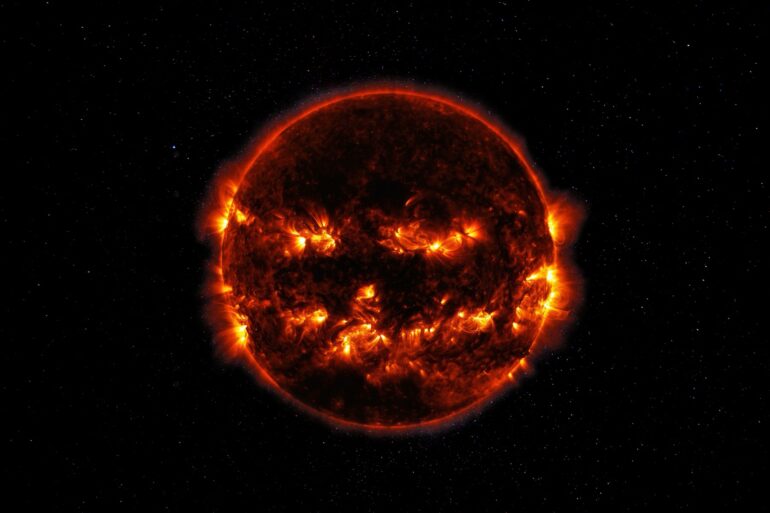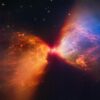Astronomers have developed a powerful technique for identifying starspots, according to research presented this month at the 241st meeting of the American Astronomical Society.
Our sun is at times dotted with sunspots, cool dark regions on the stellar surface generated by strong magnetic fields, which suppress churning motions and impede the free escape of light. On other stars, these phenomena are called starspots, said Lyra Cao, lead author of the study and a graduate student in astronomy at The Ohio State University.
“Our study is the first to precisely characterize the spottiness of stars and use it to directly test theories of stellar magnetism,” said Cao. “This technique is so precise and broadly applicable that it can become a powerful new tool in the study of stellar physics.”
Use of the technique will soon allow Cao and her colleagues to release a catalog of starspot and magnetic field measurements for more than 700,000 stars—increasing the number of these measurements available to scientists by three orders of magnitude.
Since sunspots were first discovered in the 17th century, scientists have typically detected signatures of stellar magnetism indirectly, by looking at stars through different filters or detecting the modulation of spots in a star’s light curve. But by analyzing legacy high-resolution infrared spectra from the Sloan Digital Sky Survey, Cao was able to develop a technique for identifying starspots in 240 stars from two open star clusters, the Pleiades and M67.
The study showed that precision starspot measurements are a powerful new class of data which could help researchers understand how stellar magnetic fields work. Due to precision of the technique, Cao was also able to see how age and rotation affected the magnetic fields on these stars.
“It was lurking in plain sight: Within the spectrum, there was a cooler component corresponding to the starspot which was only visible in the infrared,” Cao said.
As it turns out, younger stars can be enveloped in starspots—some of them more “spot” than star, with 80% of their surfaces covered. During her studies, Cao realized that these larger cooler regions may block so much light, it might have a measurable effect on these stars. Since the light must eventually escape, she said, the star compensates by expanding and cooling enough to make more surface area available for radiation.
Researchers also found that relying on classical methods to estimate the temperatures of these stars could be wrong by more than 100 degrees. Because scientists often rely on a star’s temperature when trying to estimate its size, astronomers could wrongly assume the radius of the star is smaller than it actually is.
“When this happens, you start seeing large changes in the stars’ structure, which can throw other important astronomical measurements off as well,” said Cao. As scientists use stellar parameters to understand our solar neighborhood and galaxy, and at times, the sizes and habitability prospects of nearby exoplanets, this method could dramatically improve researchers’ ability to test other scientific theories.
Additionally, researchers found a class of stars that are too active for standard theories to explain in the Pleiades cluster. According to Cao, these stars are not only magnetic and rife with starspots, but also overflowing with UV and X-ray radiation.
“You wouldn’t want to live around these stars,” said Cao. “But understanding why these stars are so active could change our models and criteria for exoplanetary habitability.” Further study of these unusual stars could hold the key for understanding why low mass stars are so active, the study notes.
“We can directly study the evolution of stellar magnetism in hundreds of thousands of stars with this new dataset, so we expect this will help develop key insights in our understanding of stars and planets,” said Cao.
The findings are published in the journal Monthly Notices of the Royal Astronomical Society.
More information:
Lyra Cao et al, Star-spots and magnetism: testing the activity paradigm in the Pleiades and M67, Monthly Notices of the Royal Astronomical Society (2022). DOI: 10.1093/mnras/stac2706
Provided by
The Ohio State University
Citation:
Astronomers use novel technique to find starspots (2023, January 26)



